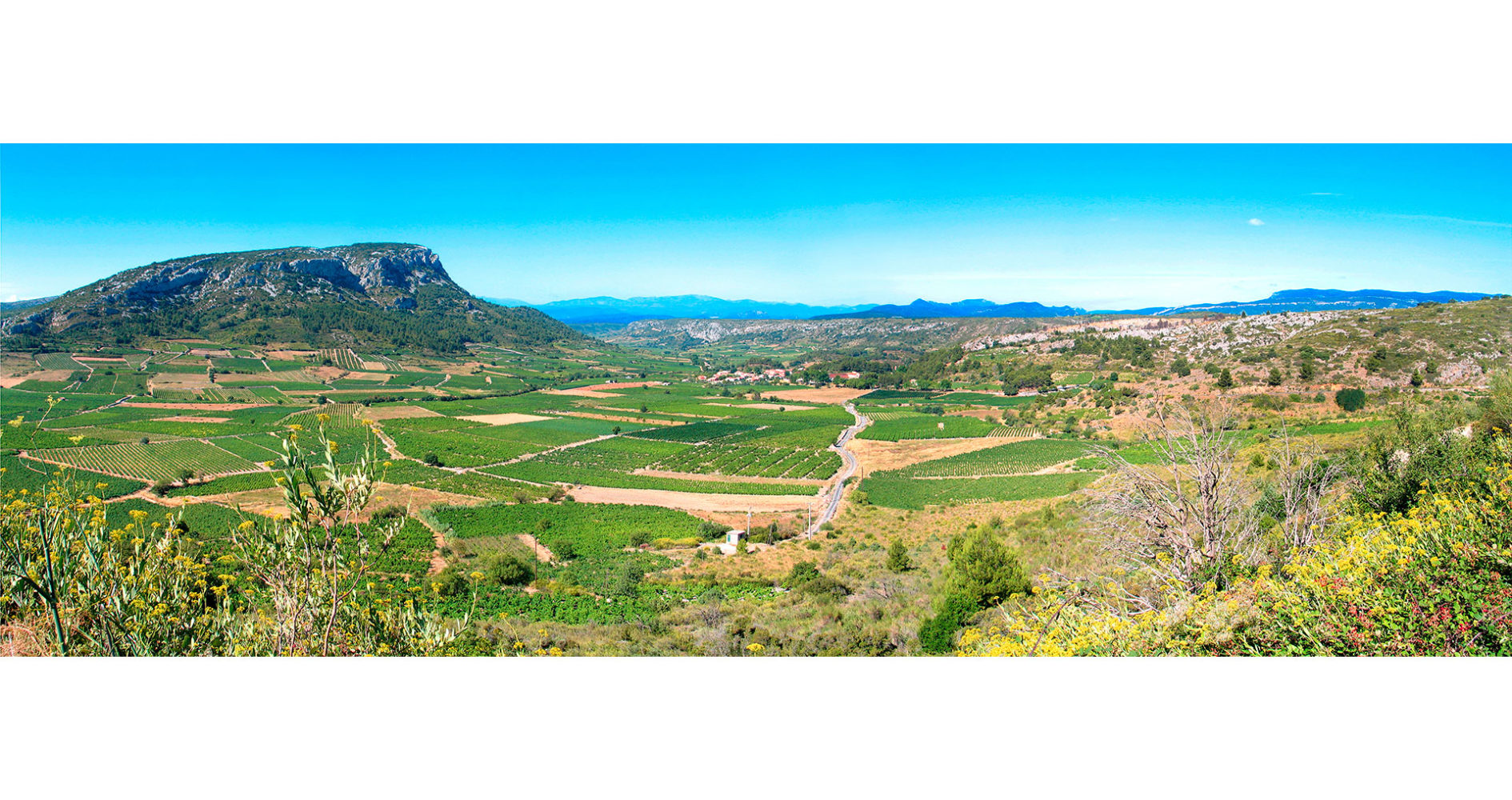On the borders of the Aude and Pyrénées-Orientales departments, in the triangle formed by Perpignan, Narbonne and Carcassonne, the Corbières-Fenouillèdes Nature Park is the latest addition to Occitanie’s regional nature parks. People come here to enjoy the breathtaking scenery, hike the trails of the Cathar countryside, observe the remarkable flora and fauna and visit the surprising citadels of vertigo. Discover it!

A link between the Mediterranean and the Pyrenees
Straddling the Aude and Pyrénées-Orientales departments , just outside the doorstep of Camping *** La Pinède, the Corbières-Fenouillèdes regional nature park covers almost 1,800 km2 and boasts just over a hundred rural towns and villages. To the east, it forms an advanced bastion at the tip of the Pyrenees, then rises to the north towards the foothills of the Massif Central. Along with its neighbors PNR de la Narbonnaise en Méditerranée and PNR des Pyrénées-Catalanes, the Corbières-Fenouillèdes Regional Nature Park has entered the list of classified parks in 2021.
Hiking in the land of birds of prey and orchids
The Corbières-Fenouillèdes Regional Nature Park is criss-crossed by numerous hiking trails. These include the mythical GR 367, better known as the “Cathar Trail”, linking Port-la-Nouvelle(Aude) to Foix(Ariège). A total of 250 km from the Mediterranean to the Pyrenees. The landscapes are many and varied: vine-covered hills, wooded valleys, garrigue, maquis, gorges, cliffs and rocky ridges. This exceptional rural area is home to remarkable biodiversity, with a wide variety of plant species, including 75 species of wild orchid, 16 of which are of heritage interest and 8 nationally protected. The massif is also home to some of France’s rarest birds of prey, including Bonelli’s Eagle, Golden Eagle, Griffon Vulture, Great Horned Owl and Peregrine Falcon.
A journey through time, from prehistory to the age of Cathar castles
Witness to over 500 million years of geological history, the Corbières-Fenouillèdes Regional Nature Park has been inhabited since prehistoric times, as witnessed by the Caune de l’Arago, the famous prehistoric cave where the oldest known European man was discovered: Tautavel Man. But it was in the Middle Ages that the region entered the history books once and for all, with the Albigensian Crusade in the 12th century against the Cathar heresy.
Perched atop vertiginous cliffs on the borders of the kingdoms of France and Aragon, the “Citadels of Vertigo”(Puilaurens, Peyrepertuse Quéribus, Termes and Aguilar) are major witnesses to the tragedy that ravaged Languedoc in the early 13th century. At the Mediterranean gateway to the Hautes-Corbières, south-east of Carcassonne, the Château de Villerouge-Termenès is also well worth a visit. It was here that the last known “Cathar Perfect”, Guilhem Bélibaste, was burnt alive in 1321. Between Carcassonne and Narbonne history buffs the Corbières massif to visit the enclosure of the Lagrasse Abbey founded by Charlemagne in 778 and long considered one of the most powerful abbeys in the kingdom of France.
Breathtaking natural sites
The Corbières-Fenouillèdes Regional Nature Park not only attracts history buffs, it’s also a paradise for hikers and lovers of exceptional landscapes. The region is home to a number of listed natural sites, including the Saint-Georges, Orbieu and Saint-Jaume gorges.
Particularly noteworthy landscapes include the enigmatic Bugarach mountain, the highest peak in the Corbières, famous for its mysteries and legends, and the Gorges de Galamus and its “potholes of giants”. In the south of the Aude department, you can also discover the Pierre-Lys gorge , a spectacular two-kilometre-long canyon with cliffs over 300 metres high. Finally, we head for Grau de Maury, a small pass nestling in the heart of the Cathar Corbières. Between the castles of Quéribus and Peyrepertuse, the “sentier du vertige” is reserved for seasoned hikers who are not afraid of heights. The result is a panoramic view of Fenouillèdes and the Corbières.
Further information www.parc.corbieres-fenouilledes.fr


